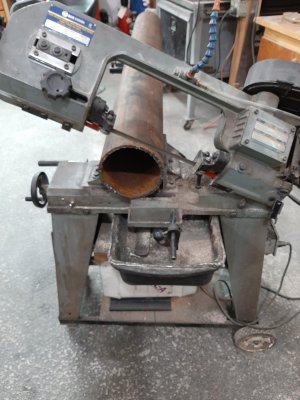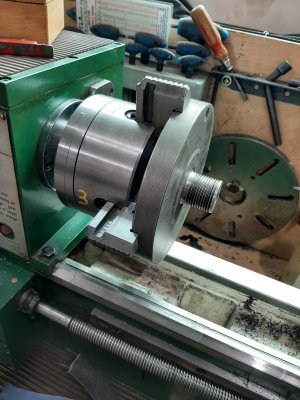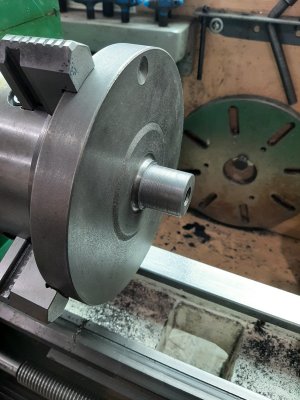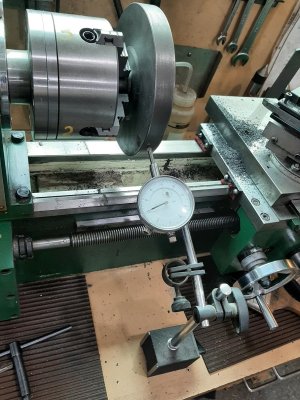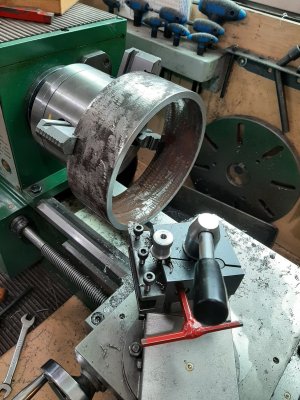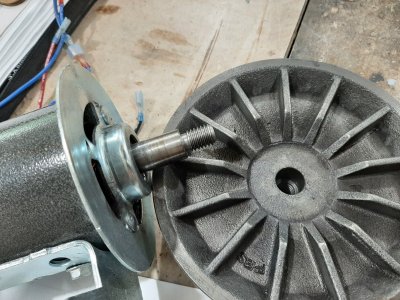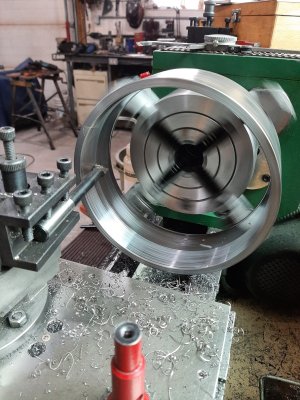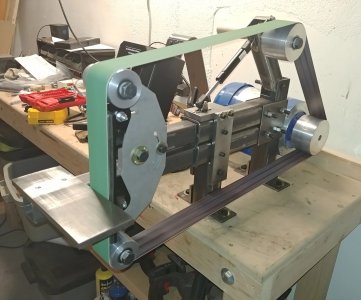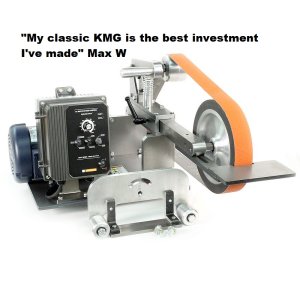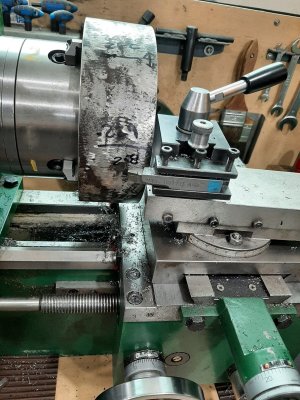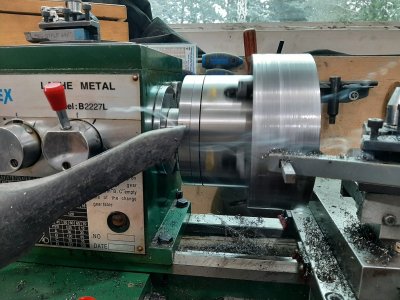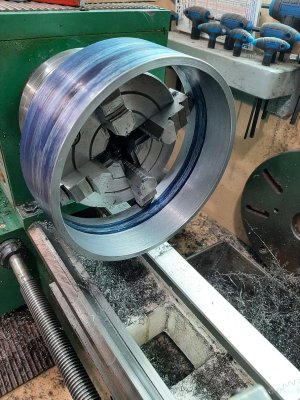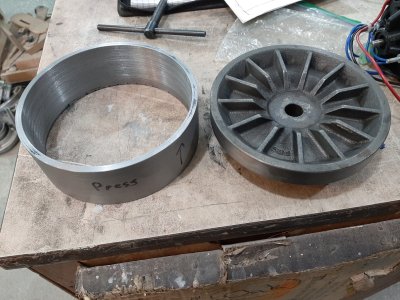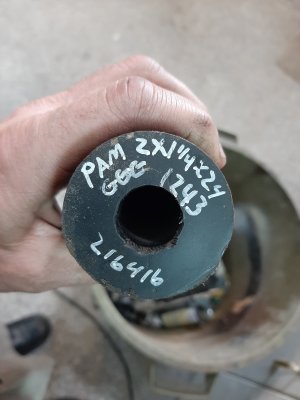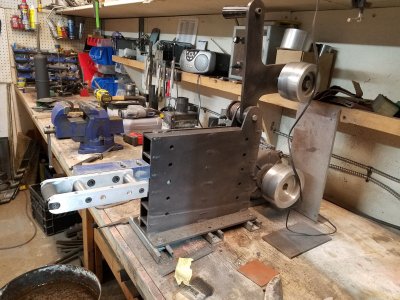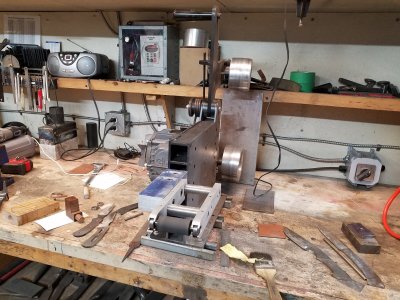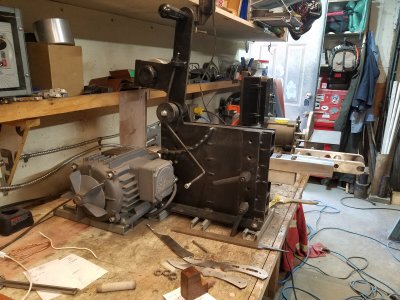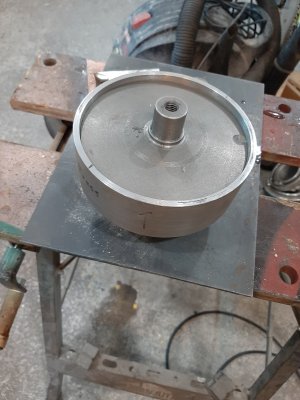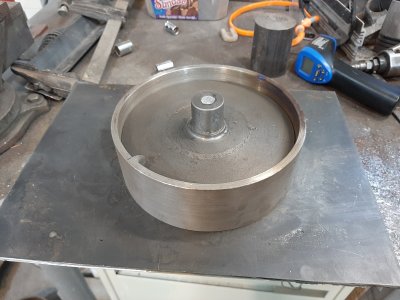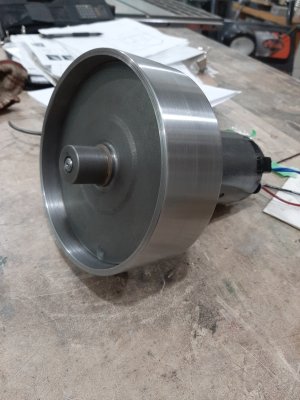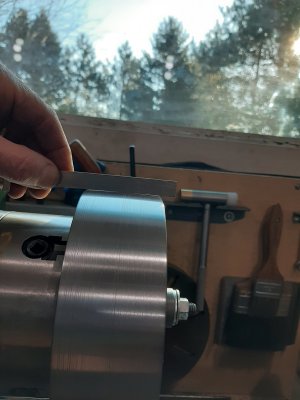Well, this is the largest project I have taken on with my lathe. Did I mention I might want a larger lathe...? 
Worked through the steps I outlined above. My lathe is a 10" but these 6 inch pieces, with my chuck, max out the jaws. Apparently, my measuring tools too as I only go up to 6" vernier calipers so making a press fit might be more "guessetimate" than measurement.... I don't think you have a lot of trial and error room in press fitting.
Turning the grooves off the hub was easy. The hub is cast iron but machines nice. Cleaner than some cast I have worked with. I just cleaned up the rim as I don't know how far I will need to go till I get the pipe cleaned up. That in itself is taxing me. Probably mostly lack of experience on my part, but there are also machine limitations in the equation. @RobinHood gave me some concerns to watch for and I tried to be wary of it but not sure my little chuck would be bending the pipe with .258 walls. All the same, I figured good to be careful. Before I started, I used a grinder to clean the majority of the rust off of the inside and outside of the pipe, but in doing this, I then found it hard to get a perfect alignment in the chuck because of the variations in the surface caused by the grinder. I think if I were to start over, I would do it slightly differently. Near the end, (ie when I had it almost one clean inner surface, I noticed chatter so I switched to a heavier boring bar with a HSS bit in it and it cut nicer than the carbide boring tool I used for most of the cutting. I should have done it all with the heavier bar but it has a longer overhang at the end so can't get all the way in. And I was thinking that the rusty inside would beat up the HSS more than the carbide All good experience. though Still working on it. Found out that my cross slide does not fit under the pipe in the lathe so need a long tool to cut the outer surface. I think I will be using the boring bar on the outer surface just for reach.
From the pic of the back of the hub, you can see what I have to work with for material thickness on the edge, which will be press into the pipe to form the drive hub I think there is lots of material there if I can match a maximum pipe thickness with minimal removed from the hub. Will know more when I get the pipe to good inside and outside surfaces. The hub is good to go now, I think, so anything from here on it is just to get the fit I need.
Worked through the steps I outlined above. My lathe is a 10" but these 6 inch pieces, with my chuck, max out the jaws. Apparently, my measuring tools too as I only go up to 6" vernier calipers so making a press fit might be more "guessetimate" than measurement.... I don't think you have a lot of trial and error room in press fitting.
Turning the grooves off the hub was easy. The hub is cast iron but machines nice. Cleaner than some cast I have worked with. I just cleaned up the rim as I don't know how far I will need to go till I get the pipe cleaned up. That in itself is taxing me. Probably mostly lack of experience on my part, but there are also machine limitations in the equation. @RobinHood gave me some concerns to watch for and I tried to be wary of it but not sure my little chuck would be bending the pipe with .258 walls. All the same, I figured good to be careful. Before I started, I used a grinder to clean the majority of the rust off of the inside and outside of the pipe, but in doing this, I then found it hard to get a perfect alignment in the chuck because of the variations in the surface caused by the grinder. I think if I were to start over, I would do it slightly differently. Near the end, (ie when I had it almost one clean inner surface, I noticed chatter so I switched to a heavier boring bar with a HSS bit in it and it cut nicer than the carbide boring tool I used for most of the cutting. I should have done it all with the heavier bar but it has a longer overhang at the end so can't get all the way in. And I was thinking that the rusty inside would beat up the HSS more than the carbide All good experience. though Still working on it. Found out that my cross slide does not fit under the pipe in the lathe so need a long tool to cut the outer surface. I think I will be using the boring bar on the outer surface just for reach.
From the pic of the back of the hub, you can see what I have to work with for material thickness on the edge, which will be press into the pipe to form the drive hub I think there is lots of material there if I can match a maximum pipe thickness with minimal removed from the hub. Will know more when I get the pipe to good inside and outside surfaces. The hub is good to go now, I think, so anything from here on it is just to get the fit I need.
Attachments
Last edited:

